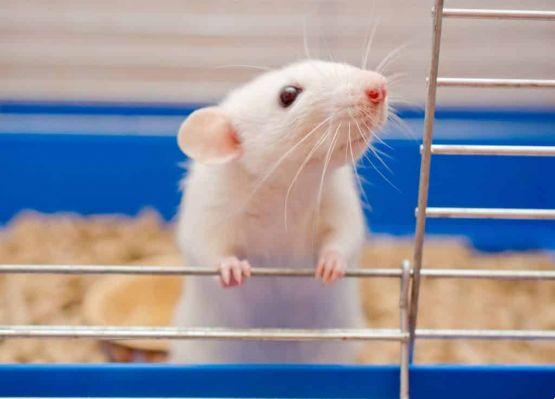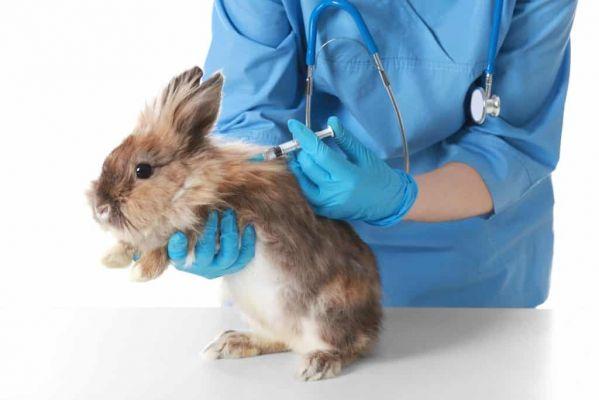Next, we'll shed some light on animal testing. There are numerous types of tests that most people are unaware of. Our purpose with this text is to make as many people aware as possible about the subject so that they make choices for companies that do not use this practice.
A current example that is constantly in the media is the discovery of a vaccine to fight the coronavirus (Covid-19) pandemic. To arrive at an efficient vaccine, this process goes through numerous tests, most of which are done on animals.
Not only the case of this vaccine but also the research of most medicines, cosmetics and many other items undergo this procedure (tests), but we have other alternatives, which will be in links for verification below the text.
Throughout history there are several reports that many drugs that have been tested on animals have been successful, but unfortunately this has not happened with humans.
There are several species of animals that are used in this practice, such as dogs, cats, rabbits, rats, monkeys, pigs, among others.
Some of the reasons for being against animal testing are: 1. Animal testing and human results only agree 5-25% of the time.
2. 95% of drugs approved by animal testing are immediately discarded as unnecessary or dangerous for humans.
3. At least 50 drugs on the market cause cancer in laboratory animals. But they are allowed, because it is admitted that animal testing is not relevant.
If you are more interested in the subject, you will find at least 25 reasons to be against this practice in the following link:
Source: 25 reasons to be against animal testing | All about Dogs
TYPES OF TESTS IN ANIMALS
Draize Eye Irritation Test

It is used to measure the harmful action of chemical ingredients found in cleaning products and cosmetics. Reactions caused on the skin and eyes of animals are observed. In tests for eye irritation, the products are applied directly to the eyes of conscious animals. During the test period, which normally lasts a week, the animals can suffer from extreme pain and mutilation and blindness usually occurs. To prevent the animals from scratching their eyes, they are immobilized on supports, from which only their heads protrude. It is common for your eyes to be held open permanently by means of metal clips, which hold your eyelids together. The test usually causes irreparable damage to the animals' eyes, leaving them ulcerated. At the end of the period, they are killed to ascertain the internal effects of the substances tested. Rabbits are the most used animals in Draize tests because they are cheap and easy to handle: their large eyes make it easy to observe the results. However, rabbit eyes are a poor model for human eyes. The thickness, tissue structure and biochemistry of rabbit and human corneas are different. Rabbits have minimal tear ducts (almost no tears). Test results are subject to ambiguous interpretation. What appears to be serious harm to one technician may seem mild to another. Remember the shampoo that doesn't burn in the baby's eye?
So it is…. she burned, tortured and killed thousands of animals!
Draize Dermal Irritation Test
It consists of immobilizing the animal while substances are applied to scraped skin and wounds (adhesive tape is pressed firmly into the animal's skin and violently ripped off; this process is repeated until layers of live flesh appear). Substances are then applied directly to the animal's clipped and injured skin. This test is widely used for moisturizing creams, perfumes and shampoos.
Alcohol and tobacco toxicity tests

Animals are forced to inhale smoke and get drunk before being dissected. You smoke? Do you like alcohol? How about rethinking for you and for them?
Test LD 50
Abbreviation of the English term Lethal Dose 50 Percent (50% lethal dose). It is the test to detect the amount of substance that will kill half of the group of animals,
at a predetermined time, if ingested or inhaled forcibly or exposed in any way. Created in 1920, the test serves to measure the toxicity of certain ingredients. Each LD 50 test is conducted for a few days and uses 200 or more animals. During the testing period, the animals typically suffer from excruciating pain, convulsions, diarrhea, suppuration, and bleeding from the eyes and mouth. At the end of the test, the animals that survive are sacrificed. Annually, an estimated 4 to 5 million animals in the US are required to inhale and ingest (through a tube inserted into the throat) body lotions, toothpaste, fabric softeners and other potentially toxic substances. Even when LD 50 is used to test substances that are clearly safe, it is customary to seek the concentration that will kill half of the animals. Thus animals have to be exposed to exorbitant amounts of substances proportionately impossible for a human being to accidentally ingest. This test proves to be ineffective because the results vary greatly depending on the species of animal used. A reliable prognosis of the lethal dose for humans is impossible to detect with animal tests. Shall we review the brand of our detergent, soap powder, shampoo, moisturizing cream and others? What do we have to lose? And the animals to gain from our conduct?
Experiments in the field of psychology
Behavioral study, including deprivation of maternal protection and social deprivation in the infliction of pain, that is, moving animals away from the coexistence of other animals to observe fear; use of aversive stimuli, such as electric shocks for learning; and inducing animals to psychologically stressful states, such as taking newborn babies away from their mother, for example. Psychology courses use animals to empower their students. Why this at this point in the story?
weapons experiments

Animals are subjected to radiation from chemical and biological weapons, as well as discharges from traditional weapons. They are also exposed to gases and shot in the head to study the speed of the projectiles.
dental research
The animals are forced to maintain a harmful diet with sugars and unhealthy eating habits to, in the end, acquire cavities and have gums peeled and the dental arch removed.
crash test
Animals are thrown against concrete walls. Baboons, pregnant females and other animals are torn apart and killed in this horrendous practice.
Dissection or Vivisection
Animals are dissected alive at universities and other study centers. The courses of medicine, veterinary medicine, biology, chemistry do this routinely.
You may also like
- Understand what cruelty-free cosmetics are
- Discover how vegan lipstick is made
- Delight in the protection animals can bring
Medical-surgical practices
Millions of animals undergo surgery in medical schools. Many of them are absolutely unnecessary and carried out by inexperienced students who inflict atrocious suffering on the guinea pigs. This practice is proven to be unnecessary for the learning of future doctors and veterinarians, who can follow really necessary procedures under the direct intervention of a teacher without any risk to the patient, whether human or not.
Source: http://evolucaosustentavel.blogspot.com/2010/06/testes-em-animais-tipos-de-testes.html
Below are links where you can find reasons and alternatives about animal testing:
50 Fatal Consequences of Animal Experiments
“Scientific research on animals is a fallacy,” says physician Ray Greek
Swiss proves that there are alternatives to animal experimentation
Ineffectiveness of animal testing is denounced at a seminar at OAB/RJ
New technology promises to end animal testing
3D prints of miniature organs could finally herald the end of animal testing
We can see that some articles are almost ten years old and even with that time, unfortunately, we cannot witness evolutionary changes in this regard in many sectors. Let's make ethical choices and encourage companies that don't test on animals. In case of doubt, send an email requesting information from the company on this matter, asking if the company performs, outsources or if suppliers perform this practice. It doesn't take five minutes and we can save lives with that attitude.
“I'm against animal testing because they don't work. They have no scientific value… And every good scientist knows that.”
– Dr. Robert S. Mendelsohn, physician (quoted in the documentary “Lethal Medicine”, 1997).
“The laboratory of a vivisector is a true chamber of terror. It's a pseudoscience brothel. Animal testing is no less cruel and shameful than the horrors committed in the name of faith in the Dark Ages.”
– dr. W. Dodge, médico (“The Open Door”, jan. 1913, nº 6; citado em “1000 Doctors (and Many More) against Vivisection”, p. 157).

























